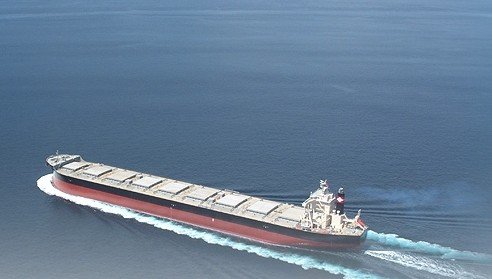
As first reported by Splash last week, Daiichi Chuo Kisen Kaisha, Japan’s fifth largest shipping line, has filed for bankruptcy, sending shockwaves around the dry bulk world. The line filed for bankruptcy protection in Tokyo this morning with 120bn yen ($1bn) in liabilities.
Daiichi Chuo had suffered four consecutive years of losses and was expected to post losses of more than $100m this year.
Its stock will be delisted from the Tokyo Stock Exchange on October 30. Its shares, which have plunged 44% in value this year, were suspended from trading today.
Shares in Mitsui OSK Lines (MOL), Daiichi Chuo’s largest shareholder with a 16.5% holding, had dropped 8% to 286 yen by 1pm today.
Japanese shipping companies Nissen Kaiun and Doun Kisen also hold significant stakes. Daiichi Chuo’s second largest shareholder is Nippon Steel & Sumitomo Metal.
MOL has three post-panamax coal carriers on 15-year time charters to Daiichi Chuo, the contracts for which commenced in June this year and are due to terminate in May 2030. The vessels are Shoyoh, Reihou and Tenso (all 97,100 dwt, built 2013).
Ownership of the three vessels was transferred from Daiichi Chuo to MOL in May this year. MOL paid around 230m yen ($1.9m) for 100% ownership (300 shares) of Daiichi’s subsidiary TDC Shipping, the Panama-registered owner of the three coal carriers. The sum included Y3m for the stock transfer of the subsidiary. Daiichi Chuo has chartered back the vessels, which are dedicated to transporting coal for Tokyo Electric Power Co.
Daiichi Chuo commented in a statement today: “China’s economic slowdown and the large amount of new bulkers entering the global fleet plunged the shipping market into an unprecedented period of stagnation. It has become difficult to continue doing business.”
The line’s president, Masakazu Yakushiji, an MOL appointment, pledged to bounce back. “In the future, under the supervision of the court and trustees, we will commit ourselves to regenerating the business,” he commented in a release out today.
One source with charter connections to the Japanese line told Splash: “One would assume that anyone with ships on charter will get them returned – especially if the charters are not in the money. These things always take some time to unravel, but it’s another body blow to the bulk carrier market.”
Daiichi Chuo’s fall is the largest Japanese shipping bankruptcy since Sanko Steamship three years ago. Daiichi Chuo, whose history dates back to 1892, has a fleet of around 170 ships. Its charter commitments spread across the world.
